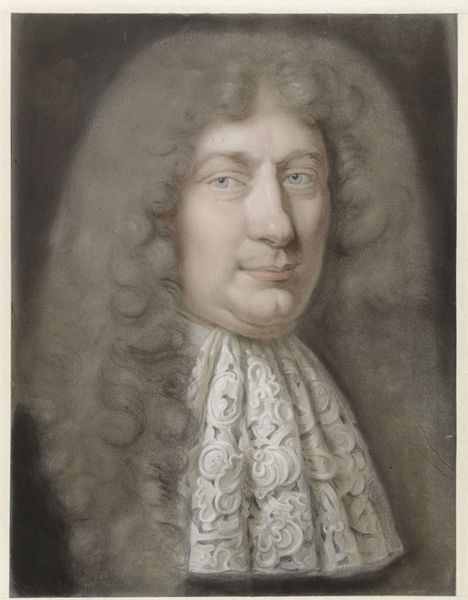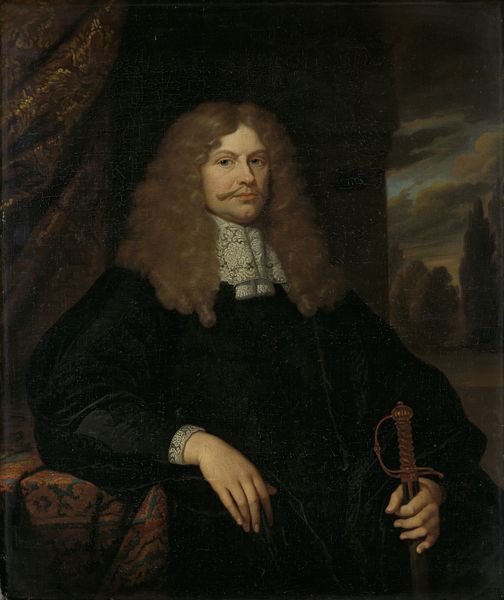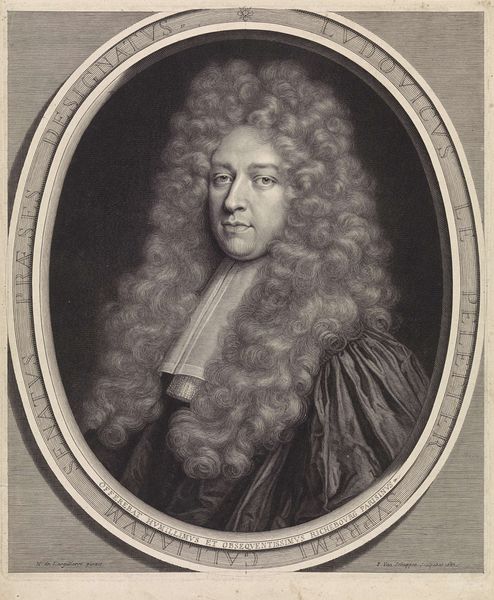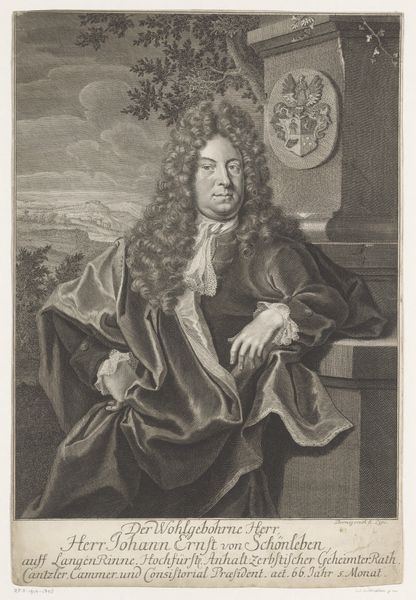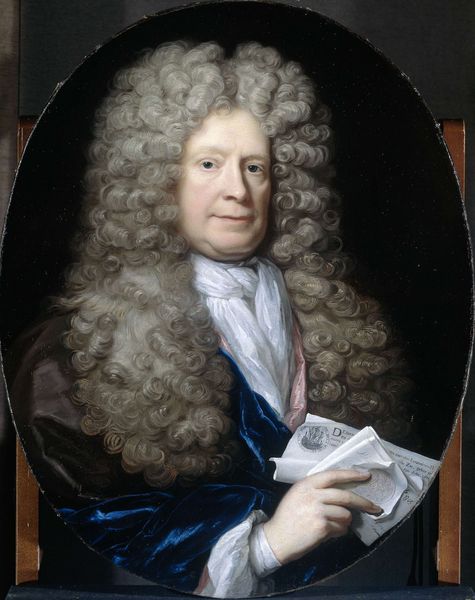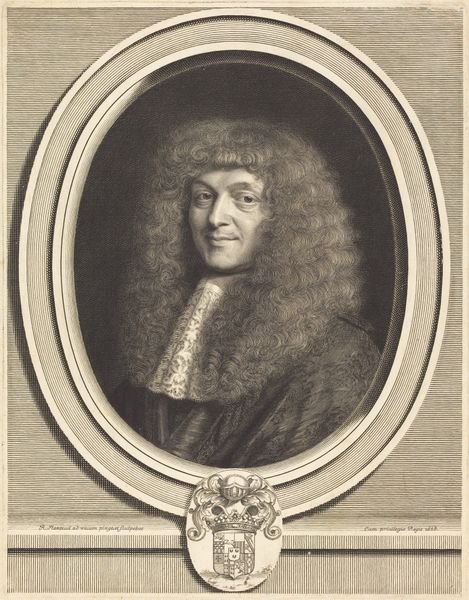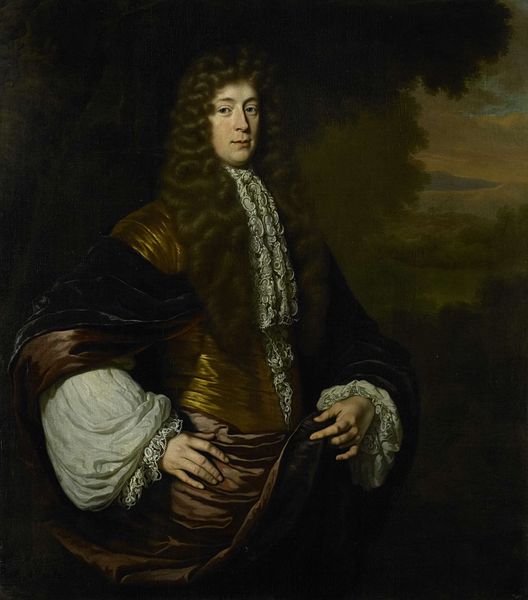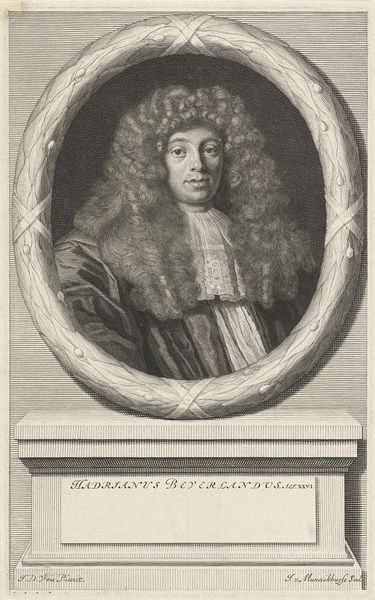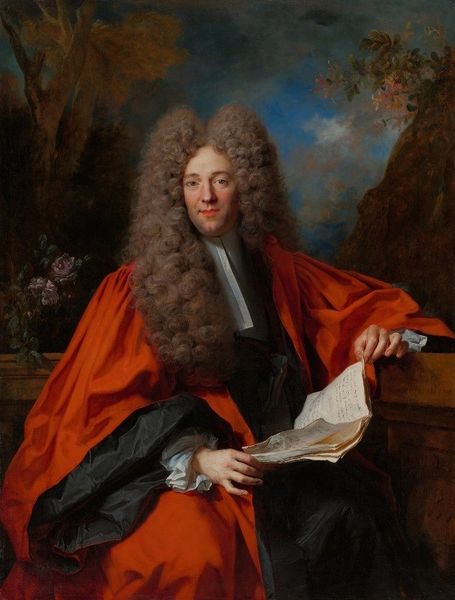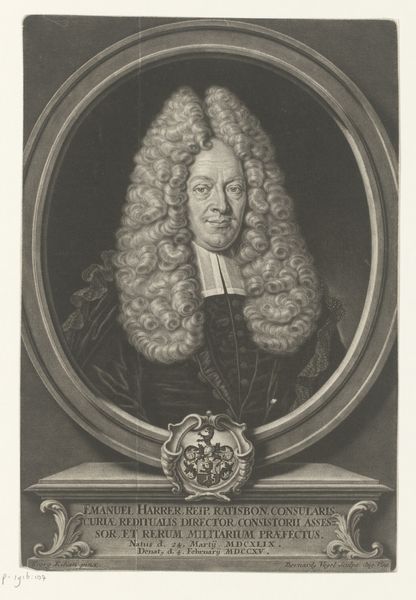
Coenraad van Beuningen (1622-1693)?, Burgomaster of Amsterdam 1675
0:00
0:00
painting, oil-paint
#
portrait
#
baroque
#
dutch-golden-age
#
painting
#
oil-paint
#
figuration
#
history-painting
#
realism
Dimensions: 49 cm (height) x 39.5 cm (width) (Netto)
Curator: This is a portrait of Coenraad van Beuningen, likely the Burgomaster of Amsterdam, attributed to Caspar Netscher and dated to 1675. Editor: There's an undeniable sense of power emanating from this portrait. It's not just the confident stance or the luxurious fabrics, but also a kind of contained energy. The light seems to concentrate on his face, highlighting the contrast between the rich clothes and the simplicity in the expression. Curator: Indeed. Netscher was known for capturing the dignity and status of his subjects, reflecting the societal emphasis on wealth and civic authority during the Dutch Golden Age. Van Beuningen himself was a very influential figure in Amsterdam. I wonder if you notice the tension in portraying a political persona during that time of social change. Editor: Absolutely. There's this undercurrent of something hidden, especially concerning who holds the real power within the society. Also the ball on which the hand rests feels like it can point out to colonialism, that it needs his authority. It really emphasizes the intersection of power, wealth, and image in the Dutch Republic. Curator: Precisely. Consider the context. The Dutch Golden Age was also built on global trade and, of course, colonialism. How are such figures perceived and remembered through art and historical documentation today? Editor: Exactly! It makes you wonder what perspectives are left out or actively suppressed in these visual portrayals of leadership. The man certainly held power but at whose expense? Curator: And portraits served as powerful political statements. The scale and detailed realism of the lace cuffs, and even his carefully styled wig all contribute to crafting a deliberate image. Editor: Seeing it through a contemporary lens, this makes me think about the portraits of corporate executives or political figures today. These curated images are all part of maintaining power structures and conveying specific narratives. Curator: Ultimately, Netscher's portrait prompts reflection on the intersection of art, power, and social consciousness—essential considerations in any gallery visit today. Editor: I concur. It’s a compelling example of how a single portrait from the 17th century can still raise crucial questions about social narratives today.
Comments
No comments
Be the first to comment and join the conversation on the ultimate creative platform.
